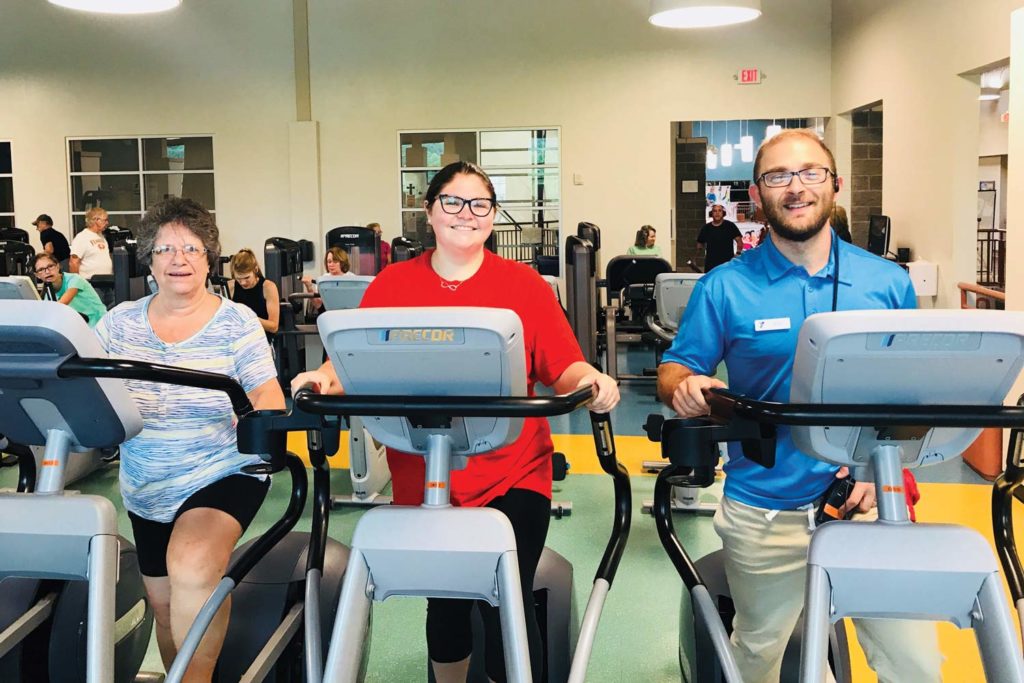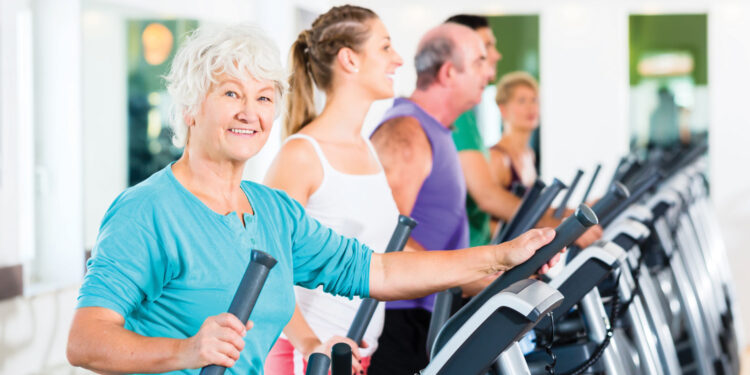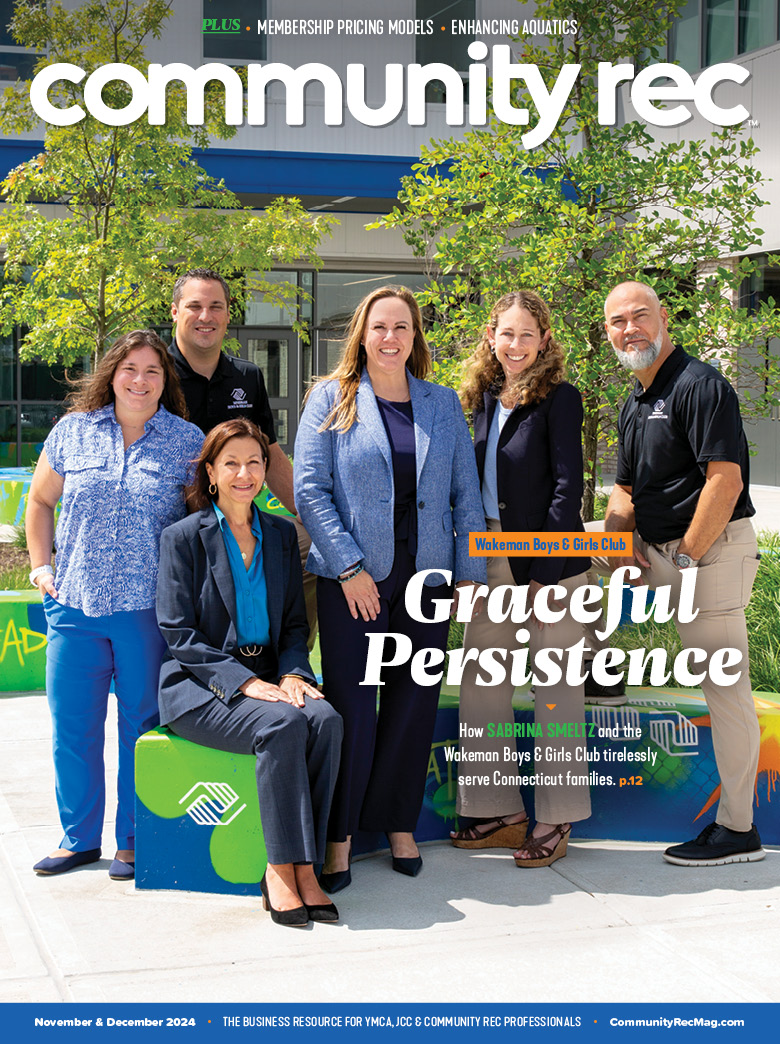Community rec centers are home to a wide variety of members. When it comes to fitness equipment, you want to ensure yours is as adaptive to your population as possible.
For the Greater Kingsport Family YMCA in Kingsport, Tennessee, one of the concerns they address when buying or replacing fitness equipment is the safety of their overweight members. “You want people to feel comfortable and welcomed, and you want it to be safe for them,” said Abigail Weaver, the Y’s vice president of advancement. “If they are heavier, you want your equipment to be able to withstand – safety is a huge factor and decision-maker.”
Other members to be mindful of are those who are looking to continue their physical therapy practices on their own after healing from an injury. “I’m seeing more people coming in with limitations — they’re in wheelchairs, or they have shoulder or knee injuries,” said Judy Couillard, the membership, health and wellness director at the YMCA of Frederick County in Frederick, Maryland. “They have to have something they can do to rehab, and maybe it’s transitioning from a physical therapist to being on their own. So certain equipment is needed to assist with that demographic.”
Couillard is able to ensure her facility’s equipment is meeting the needs of her members through a senior focus group. With this direct means of communication, she was able to learn her members are interested in recumbent bikes, such as NuStep, which has both peddling and arm movements, as well as an easy-to-use step-through system for more accessibility.
“Life Fitness also makes some strength equipment that does the same thing, where a simple movement makes the seat rotate away so members in wheelchairs can go in and do an upper body workout,” said Couillard. “The way the industry is going, we have to have equipment that will assist the type of demographic who need this rehabilitation equipment to exercise and get stronger.”

Weaver also finds the NuStep and adjustable physical therapy equipment to be popular in her facility, which she was able to discover through the use of demos. “In our experience with NuStep, Precor and Matrix, if you’re considering a new piece of equipment, they will allow you to have a demo for a couple of weeks,” she said. “It helps your people feel like they have a say and a vote in what you’re getting, so you’re able to preview it for them.”
Keeping your fitness equipment updated through the use of demos is a great way to ensure you’re truly getting what your members want and facility needs. “You have so many square feet available and you want to make the right choices,” said Ralph Caputo, a personal trainer at the Scranton JCC in Scranton, Pennsylvania. “You don’t want to put something in the gym that’s not going to be used.”
As a trainer out on the fitness floor, Caputo is able to observe the members in his facility and make recommendations to the directors on what equipment is popular and what they should invest in.
“You don’t want to just put down the best equipment, but the kind that is designed to help your clientele,” elaborated Caputo. “If you want to change your clientele, or attract a different age group, that’s where I think picking out the right equipment is important – you don’t want to put a lot of suspension units in a fitness center that has a lot of older people, because they’re not going to be able to handle it.”
Technology has also made its way into most fitness facilities and is a popular addition to new equipment. “The treadmills we have include the interactive screen on it so you can login to Netflix and watch while you exercise,” said Weaver. “That’s been a huge success because our culture likes technology. It makes sense if you can binge watch your show while you’re walking — you will probably walk or run further than you would otherwise.”
Weaver finds that overall, their treadmills and ellipticals still get the most use — therefore, they invest in different brands and types, such as the Precor Adaptive Motion Trainer and the Octane Zero Runner. “There are so many different variations out there – some people have different preferences and that helps make your facility welcoming,” she said.
To avoid the opposite of welcoming, Weaver elaborated that outdated and improperly maintained equipment can deter members. “If you have equipment that is down all the time or needs maintenance, or if you get on an elliptical and it’s making a noise every stride, it puts doubt in your mind,” she said. “If it’s making noise, it can be embarrassing for the person on the machine – it’s drawing attention to them.”
One way the Frederick County Y keeps their fitness equipment updated is through a leasing program. “We lease equipment, so we know every three years we get new equipment and the members always like that,” said Couillard. “They are appreciative that we’re keeping on top of things and always offering new models and new things coming in to the industry.”

Couillard elaborated on the importance of keeping up with what’s new in the industry by attending continuing education opportunities. Most recently, she was able to attend a YMCA seminar at the Life Fitness corporate office in Chicago, Illinois. At this seminar, Couillard joined roughly 30 other Ys from around the country on a tour of the facility, where they learned how Life Fitness makes their equipment.
“They gave us a tour and told us all about how they make the equipment, and the different aspects of equipment for different folks, different body types and disabilities,” described Couillard. “And how they design cardio and strength equipment that will be beneficial for every type of individual, whether they are the most fit, or are brand new and have never seen a piece of equipment before.”
Through continued education and observing the use of equipment in her facility, Couillard has found functional training is still on the rise. “What’s really trending is people are moving from straight cardio equipment of getting on a treadmill, to now we’re going into more functional exercises – so we need to be able to offer them that aspect too, whether through a class, equipment or accessories,” she said.
While it’s easy to get caught up in having the latest and greatest in fitness equipment, it’s still important to focus on accommodating the demographics in your community and seeing what they want.
“What are their needs, what do they feel comfortable with, what are their preferences, do they feel safe and is [equipment] well-maintained?” asked Weaver. “If you get too much into just looking at the shiny new equipment, then you run the risk of falling into more of an ordinary gym and we don’t want to do that. These are tools to help people’s health and wellness – that’s just part of what we do at the YMCA.”










